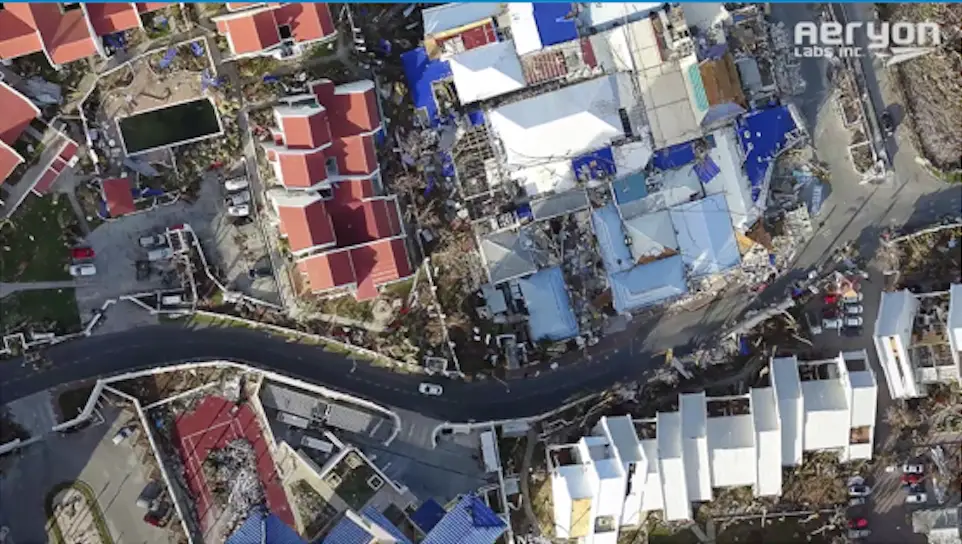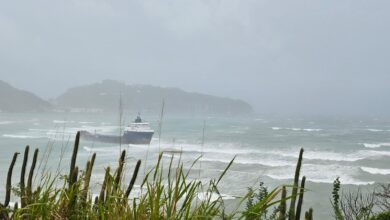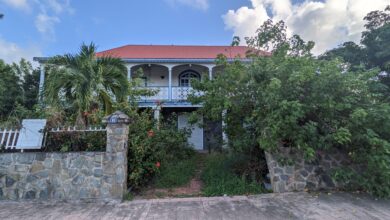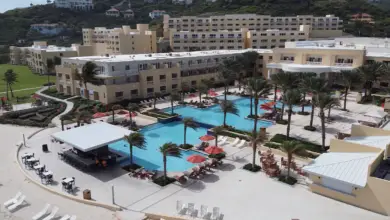The island of Sint Maarten has been tattered, torn and ripped apart. Unfortunately, it does not stand alone in that regard, with Anguilla, Dominica, Guadeloupe, Puerto Rico and others joining in the ranks of destruction. It’s an unimaginable scene when we look at videos like this one, and yet, it’s the daily reality of those that live on the island.
There are billions of people who weren’t on the island during, or since, Hurricane Irma hit. With a population of approximately 75,000 people, a few thousand tourists, and perhaps a thousand or so volunteers now on the island, it’s safe to say that, relative to the rest of the world, only a few have seen the damage up close.
So, the only thing most of us can do is imagine. Imagine looking out your front door, or more likely the place where your front door once stood, to see utter destruction, a small semblance of the way things used to be. Everything you ever owned now scattered about, with no chance of ever identifying most of it.
Imagine the despair that sight must create, knowing your entire life has been turned upside down and strewn about. Tragedy is something that’s very rarely shared with an entire population of people. Catastrophes are what tend to bind large communities together and create an environment for nations to share in nearly apocalyptic settings.
And all the while, the rest of the world continues to move. We look at the pictures and the videos in utter disbelief. Some of us cry, openly weep, while others can’t possibly imagine what being stuck in a natural disaster like that must be like. We give, some give, while others just simply give thanks it’s not them. (PLEASE GIVE!)
There is no way possible that anyone who hasn’t seen the aftermath firsthand on St. Maarten could ever understand what being there, calling the island your home, could be like. Looking at the complete and total destruction, I just cannot fathom what that must be like, much less actually waking up to see it day in and day out.
And yet, that is the plight of those that call the friendly island their home.
Beginning the rebuild process
The next step is to rebuild. That process has been complicated so much more by the need of neighboring islands suffering the same fate as St. Maarten. Where will the resources come from, the labor needed to clean the debris and wreckage, the money needed to rebuild, the skilled workers needed to rebuild homes and businesses? It’s a very long and daunting list, one the likes of which most of us will never come close to facing.
Yesterday, the government of St. Maarten (the Dutch side of the island) issued a notice that they had formed a committee to draft the National Recovery Plan. It would be a plan that would be put in place to formalize the entire recovery process.
Indeed, there’s logic that goes into formulating a plan to rebuild after a hurricane, but what does that look like? What is the most efficient way to recover from a catastrophe? Is there one best way? Or perhaps there’s many different approaches.
The initial steps to recovery in St. Maarten have already been taken. Safety, medical services, shelter and relief aid are always a fundamental need and top priority after a natural disaster hits. While there was a delay in getting aid to people on the island, due partially to Hurricane Jose and somewhat due to a lack of execution by the local government, that aid is now in place and being distributed.
The cleanup and collection of wreckage has also already begun. Of course, that’s a tall task that itself will likely continue for months on end. In fact, it may never fully get accomplished.
What a recovery plan might look like
After safety, medical, shelter, relief assistance, education, child services and the cleanup begin to stabilize, the recovery plan will get decidedly more complicated. What areas get rebuilt first? How do limited resources get allocated? Where does the manpower come from? How does the government coordinate with and execute the rebuild alongside private interests such as insurance companies, businesses, hotels and individuals looking to get started right away. It’s a complicated proposal.
If there’s one thing that must be a priority for the island, it’s making sure there’s enough work for the people who live there to be able to continue to support themselves. Tourism accounts for nearly 90% of the entire economy of the island (both directly and indirectly).
The money that flows from tourism literally supports the entire island. Because while approximately 20% of the island works outside of the tourism industry, it’s safe to say that the money that supports those other industries flows directly from the tourism industry.
Whatever the recovery plan looks like, it has to start with Philipsburg and the cruise port, which is already functioning. The majority of tourism — 1.9 million visitors out of 2.4 million in 2015 (via St Maarten Dept of Statistics 2015 Survey) — came to the island via cruise ships. Of course, solely focusing on the port would likely be a mistake.
Most visitors that come to the island on a cruise ship normally stay for only a few hours. That’s a window of economic activity that closes once the passengers step foot back on the ship. But for those who arrive via Princess Juliana International Airport, they stay an average of approximately 8 nights.
Cruise passengers spent an average of $205.86 per day. While overnight passengers spent an average of $75.90 per day. We also have to keep in mind that these numbers are from a survey of only a small percentage of visitors to the island. So, there is a pretty large margin of error that has to be considered and will surface below.
If we crunch some numbers we see that — based on the DoS Survey — in 2015, cruise passengers spent an estimated $391 million (1.9 million visitors x $205.86). Overnight tourists spent an estimated $304 million (500,000 visitors x $75.90 x 8 days). In total, that equals nearly $700 million in an economy with a real GDP around $1 billion. In all actuality, we know the impact of tourism is likely closer to $900 million but this is where the margin of error and likely underreporting by the survey respondents comes into play.
What this does show with a fairly decent interval of confidence is that the economic impact of visitors via the cruise port is equal to, if not greater than, the economic impact of overnight visitors.
When we look at it this way it seems that the top priority of St Maarten should be Philipsburg and getting cruise ships back into port as soon as possible. In fact, it’s safe to say that this should be the primary goal — after the fundamental services have been restored, of course — of both the private sector and the government.
With the primary resources being allocated to Philipsburg and the immediately surrounding area, the next goal should be to focus on areas with the highest amount of visitors. Marigot and Orient Beach were named by both cruise and overnight visitors as the 2nd and 3rd most visited areas on the island, behind Philipsburg.
Commercial development versus residential development
Not to be forgotten are the citizens and their personal residences, most of whom were destroyed when the hurricane hit. Ensuring people have adequate shelter is part of the initial steps of recovery we spoke about above. But having adequate shelter compared to a home are two completely different things.
Insurance will cover some of the residential rebuild, but my guess is that there are many people who’s residences were destroyed that didn’t have private insurance to cover the loss. While ensuring that people have jobs and the tourism industry is back up and running are certainly significant factors to recovery for Sint Maarten, rebuilding homes and allocating resources to that must also be taken into consideration and prioritized.
A possible plan
It’s highly likely that the aforementioned factors will weigh heavily in the development of the National Recovery Plan. To summarize:
- A complete recovery plan must be based on a system of prioritization due to limited resources
- The first priority is safety, medical services, shelter, education system, child services, relief supplies, food and water distribution
- Once the core services and humanitarian relief has been implemented, further prioritization must be completed
- The cruise port and airport resuming commercial service is a top priority for an economy based almost completely on tourism
- Philipsburg, Marigot and Orient Beach are the top three destinations for tourists on the island and those areas should be part of the first phase of the rebuild and allocation of resources (Dutch and French sides must coordinate)
- As the first phase begins, which should be immediately, the government should be working with private interests to develop following phases of the rebuild
- Simultaneously with the first phase — rebuilding Philipsburg, Marigot and Orient Beach — residential areas must have resources allocated to them so that people can get back into their homes or rebuild new homes
- Secondary phases should be developed prior to year end and those phases should begin as resources become available or upon completion of the primary phase
Full disclosure
I’m not an expert on natural disasters nor am I an expert in crisis management. I have a background in strategic finance and accounting. The research that I did for this piece took a few hours and the sources are listed below. This is not meant to be a comprehensive plan or recommendation. This is simply my attempt at trying to think about what I would consider when putting a complicated plan together meant to rebuild an island that was devastated by a category five hurricane.
If anything, I hope this piece starts a dialogue amongst people who have constructive thoughts and ideas about how this should/could work. Please leave me a comment below if you have something constructive you’d like to share. I’d love to hear from you and am happy to consider any additional resources you can point me to.
Sources: 2015 Country of Sint Maarten Annual Economic Indicators, St Maarten Dept of Statistics 2015 Survey, St Maarten Tourism Budget Analysis Report, Wikipedia, Central Intelligence Agency World Factbook





